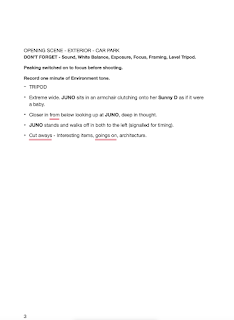STORYBOARDS & VISUAL PLANNING
STORYBOARDS
An important part of my process to help me visualise my ideas was Storyboarding. Although I didn't have a location confirmed at the time, I had an idea of how I wanted to shoot my film and an idea of where I might like to, so this informed my illustrations. Now that the shoot has been completed, I can see how crucial these were for my pre-planning. It gave me an invaluable visual reference as a guide for my shoot that could then be adapted to suit the real-life location. My only fault was that I simply didn't finish the entire scene, which did make the parts that had not been storyboarded significantly more difficult to film.
For the parts of the scene that I hadn't storyboarded, I put together a shot list as I didn't want to go in with any part unplanned and spend time having to do this during my limited shooting hours. Naturally, on the day, some shots were changed and adapted. This is one of the limitations of pre-planning your shoot without the performers in the physical space.
Finally, I tried to use shot planning apps, as well as illustrate in more detail my plan for a one-shot. This also helped my Performers to visualise their cues and understand the blocking of the scene.









Comments
Post a Comment